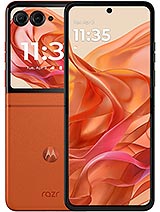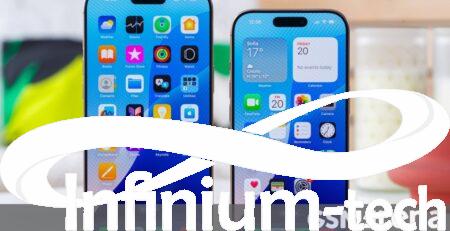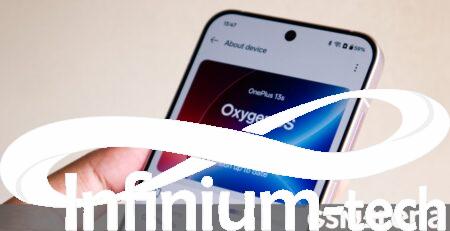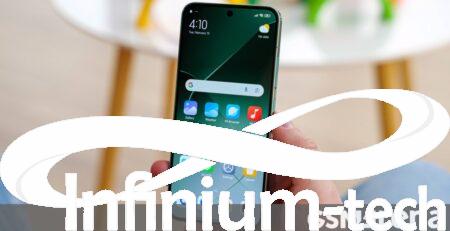Motorola Razr 50/razr (2024) review | Infinium-tech
Introduction
A bigger cover screen and water resistance — it doesn’t sound like much, but it’s what the plain Razr didn’t have last year, and now the Razr 50 has it all. Motorola’s vanilla clamshell foldable takes things up a notch, making it another viable alternative to the Galaxy Z Flips.

As with other Motorolas, it’s important to note a few naming quirks. The Razr 50 is the name of the global model, and it’s being sold in the US more or less unchanged under the name Razr 2024. Since we have a Razr 50 unit in our hands, we’ll use that name throughout the review, but our findings should apply equally to the Motorola Razr (2024).


Motorola Razr 50 • Motorola Razr 2024
OK, now let’s get back to what’s new in the Razr 50. The phone gets the Razr 40 Ultra’s cover display – at least in size and proportion, if not in refresh rate. While the Razr 40 only had a small panel on the outside, the 50 gets the full cover screen experience – with full-blown apps and a proper camera viewfinder.
The other big deal is IPX8 water resistance – more and more foldables are now rated for submersion in water and so is the Razr 50. The Galaxy’s key selling point is becoming less so.

There are a few other changes too, but none that big. The main camera is now 50MP instead of 64MP, but the sensor size remains the same, so it’s not exactly a downgrade. The chipset is another such side step – the Dimensity 7300X replacing the Snapdragon 7 Gen 1 can’t be called an upgrade. Perhaps a certain demographic will appreciate the faster wireless charging (15W vs. the older model’s 5W), but the unboxing section below will reveal another evolution in this general area that isn’t necessarily for the better.
Motorola Razr 50 specifications at a glance:
- Body: 171.3×74.0x7.3mm, 188g; Glass front (Gorilla Glass Victus), silicone polymer back (eco leather), aluminium frame (6000 series), hinge (stainless steel); IPX8 water resistant (up to 1.5 metres for 30 minutes).
- Display: main: 6.9″ foldable LTPO AMOLED, 1B colors, 120Hz, HDR10+, 3000 nits (peak), 1080x2640px resolution, 22:9 aspect ratio, 413ppi; cover: 3.6″ AMOLED, 1B color, 90Hz, HDR10+, 1700 nits (peak), 1056x1066px, 413 ppi, Gorilla Glass Victus.
- Chipset: MediaTek Dimensity 7300X (4 nm): Octa-core (4×2.5 GHz Cortex-A78 & 4×2.0 GHz Cortex-A55); Mali-G615 MC2.
- Memory: 256GB 8GB RAM, 512GB 12GB RAM; UFS 2.2.
- OS/Software: Android 14.
- rear camera: Wide (main): 50 MP, f/1.7, 1/1.95″, 0.8µm, Dual Pixel PDAF, OIS; Ultra Wide Angle: 13 MP, f/2.2, 120˚, 1/3.0″, 1.12μm, AF.
- Front Camera: 32 MP, f/2.4, (wide), 0.7µm.
- video capture: rear camera: 4K@30fps, 1080p@30/60fps, Gyro-EIS; Front Camera: 4K@30fps, 1080p@30/60fps.
- Battery: 4200mAh; 30W wired, 15W wireless.
- Connectivity: 5G; eSIM; Dual SIM; Wi-Fi 6e; BT 5.4; NFC.
- various: Fingerprint reader (side-mounted); Stereo speakers.
Motorola Razr 50 Unboxing
The Motorola Razr 50 comes in a black cardboard box that’s even longer than the already fairly tall opened Razr. Of course, the packaging inside is swanky – typical Motorola.

One special thing about this package is that it doesn’t include a charger – the previous model had a charger in the box, and this year’s 50 Ultra bundle also had an adapter. However, there is still a USB-C cable here.
Just like the Ultra, the Razr 50’s package also includes a protective case in a color matching the phone, as well as a carrying strap. The case must be glued to the phone with adhesive straps – otherwise, it won’t stick securely on it.
We think this accessory won’t appeal to many people, and it would make more sense to sell it separately rather than include it with every razor. Especially since the power adapter was removed – the whole situation is annoying to us.















Leave a Reply